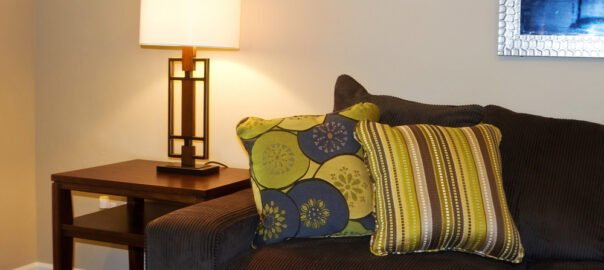
When designing your home’s interior, indoor lighting is one factor that’s rarely given the weight it deserves. Yet, it can make or break your interior decor. If you’re not sure what to consider when choosing indoor lighting, here are the top five rules to go by.
Purchase Quality Indoor Lighting
The old adage that you get what you pay applies here. Avoid cheap lightbulbs and use factors like Color Rendering Index (CRI) and Kelvin temperature to determine which light source is best for you. Ideally, you want colorful objects n your home to be illuminated properly, so talk to an expert if you’re unsure which lightbulbs are right for you.
Don’t Install Lighting Everywhere
Good indoor lighting is not about making the space as bright as possible. Instead, it’s about installing lighting in strategic places. Your aim should be to focus on certain areas that you want to highlight and create contrast with other areas that don’t need to be in the spotlight. Which areas you want to highlight generally vary from room to room.
If you’re in the living room, you probably want to focus your indoor lighting on the art on your walls and the decor on the shelves. Similarly, it’s important to concentrate lighting around the cooking areas and on countertops in the kitchen. In contrast, having bright lights in your home’s walkways is probably not necessary.
Consider Energy Efficiency for Frequently Used Lights
According to the U.S. Department of energy, LED lighting has the potential to reduce the country’s energy usage by nearly 50%. Therefore, incorporating energy efficiency into your indoor lighting can be both a cost-effective and eco-friendly move.
Balance Your Indoor Lighting
In most homes, the norm is to have one bright light in one area that’s used to illuminate other distant areas in the same room. This necessitates the need for a very light, and this causes glare if you’re standing too close to that light. The problem is, as you move further away, there will be dark corners and poorly lit areas that create an uncomfortable contrast. The best thing is to spread the light around your home evenly. Make sure you have multiple light sources that bring the right balance to your indoor lighting.
Layer Your Lighting
It’s possible to use multiple light sources to create an interesting effect in your rooms. For instance, using clusters of lighting can make your home seem cozier. In the same way, you can use layered lighting to create different scenes in every room.
Now that you know the five rules of indoor lighting, the next step is to get in touch with us, so we can provide you with the best indoor lighting shopping experience!

